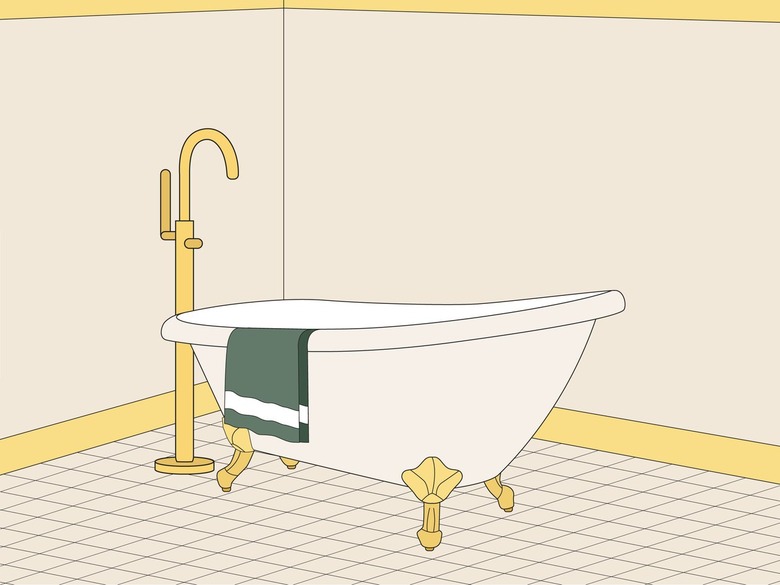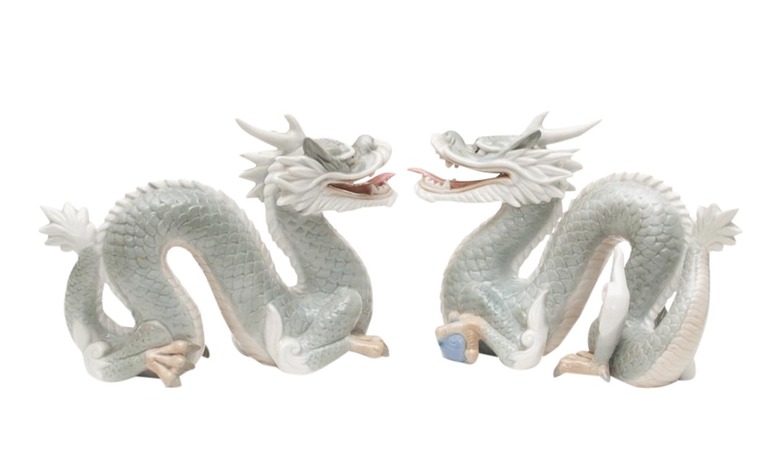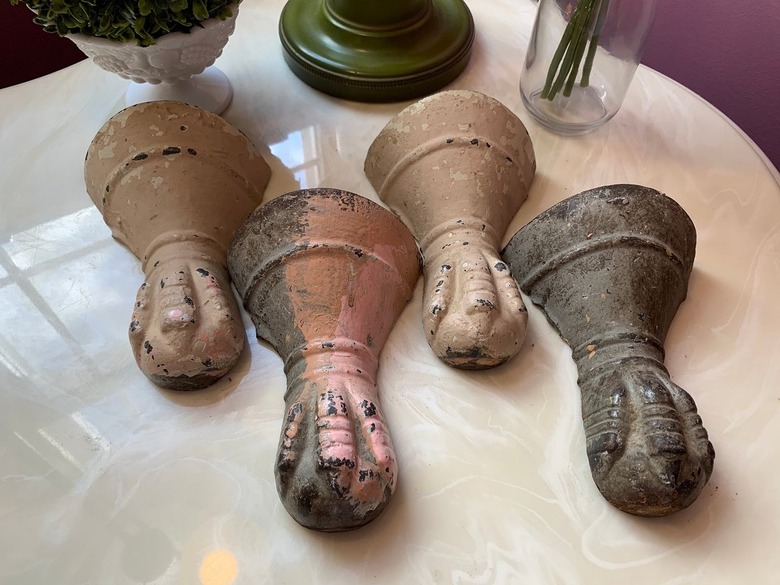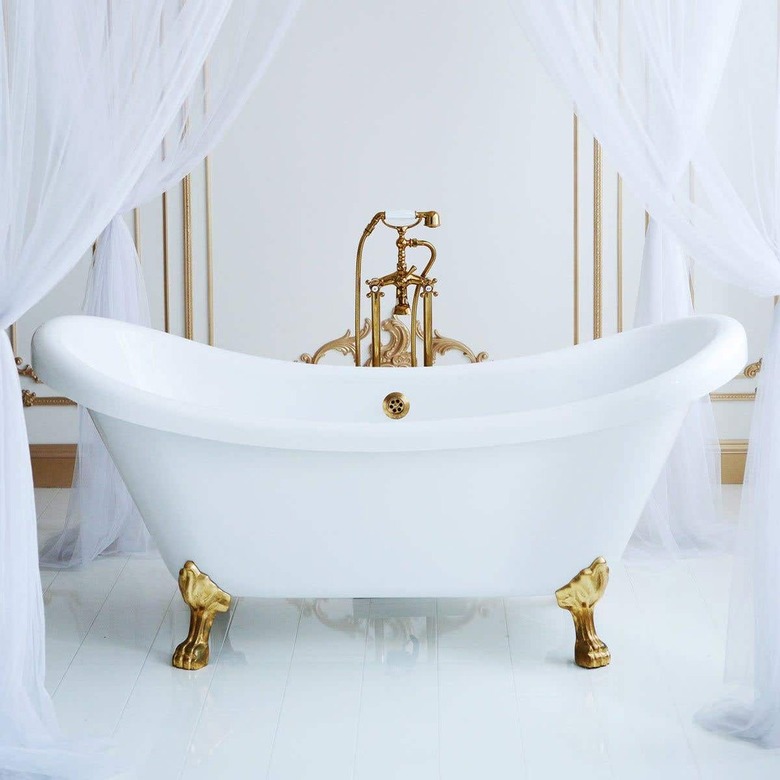How The Clawfoot Tub Gained Its Claw
Have you ever wondered about how the claw on the clawfoot tub came to be? Well, wonder no more about this animalistic choice.
Though the clawfoot tub's design hasn't been attributed to a single inventor, general contractor Scott Sidler of The Craftsman Blog writes that the clawfoot came about in Holland during the 18th century. However, for Houzz, design historian Rebecca Gross reports that this style was likely inspired by the Chinese motif of a dragon clutching a stone in its claw.
Once the clawfoot spread across Europe and came to America, it began appearing on all types of furniture. Though, when it comes to the tubs, there was an issue. The initial pieces were made of a metal (like cast iron) covered in paint that would end up chipping. Fortunately, during the 1880s, this was resolved when Scottish inventor David Buick figured out how to bond porcelain enamel to cast iron. Interestingly, he later went on to establish the Buick Motor Company.
Thanks to Buick's invention, and along with the increasing popularity of bathing, clawfoot tubs became even trendier. This was especially the case in the homes of wealthy families, where the tubs were typically placed in the center of the room (so servants would be able to maneuver around them) on the ground floor (they were too heavy for upper levels).
Funnily enough, Vintage Tub & Bath reports that Kohler's first clawfoot tub was described as being a "horse trough/hog scalder [that] when furnished with four legs will serve as a bathtub." (I mean, they're not exactly wrong.)
Clawfoot tubs reamined in vogue until the early 20th century, but they featured different types of sloping designs and "claws" depending on where you lived. Gross describes the "eagle claw" as being a popular American form — since the eagle is the national bird — in which claws were shaped like eagle talons around a ball. In England, the "lion's paw" was the norm, acting as a symbol of the kingdom.
According to Modern Bathroom, the tub's claws symbolized something entirely different once World War I started. Since the feet were made of metal, they were often confiscated to contribute to weapon production.
Following the war, the boom in American construction led to an increase in affordable housing with indoor plumbing (which wasn't widespread at the time). Since clawfoot tubs weren't easy to mass manufacture, they began being swapped out for built-in tubs with apron fronts. The fact that showering was becoming more popular than bathing, according to Sidler, also contributed to this change.
Nowadays, as homeowners aim to stand out from the crowd, clawfoot tubs appear to be making a slow comeback. However, instead of featuring weighty cast iron, Modern Bathroom states that today's designs are often made of fiberglass or acrylic.
In 2021, though we may not have servants who need wiggle room to help us bathe, we still think the clawfoot tub would be the literal center of attention in any bathroom. It's just that iconic.



